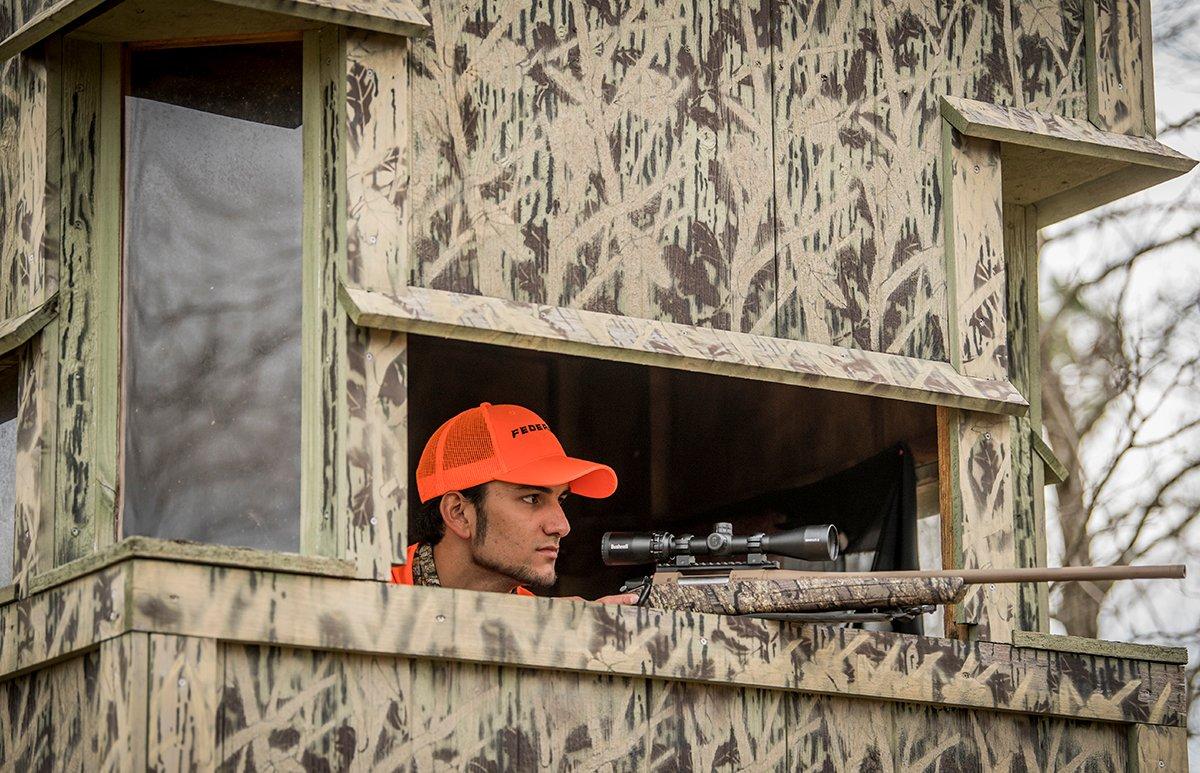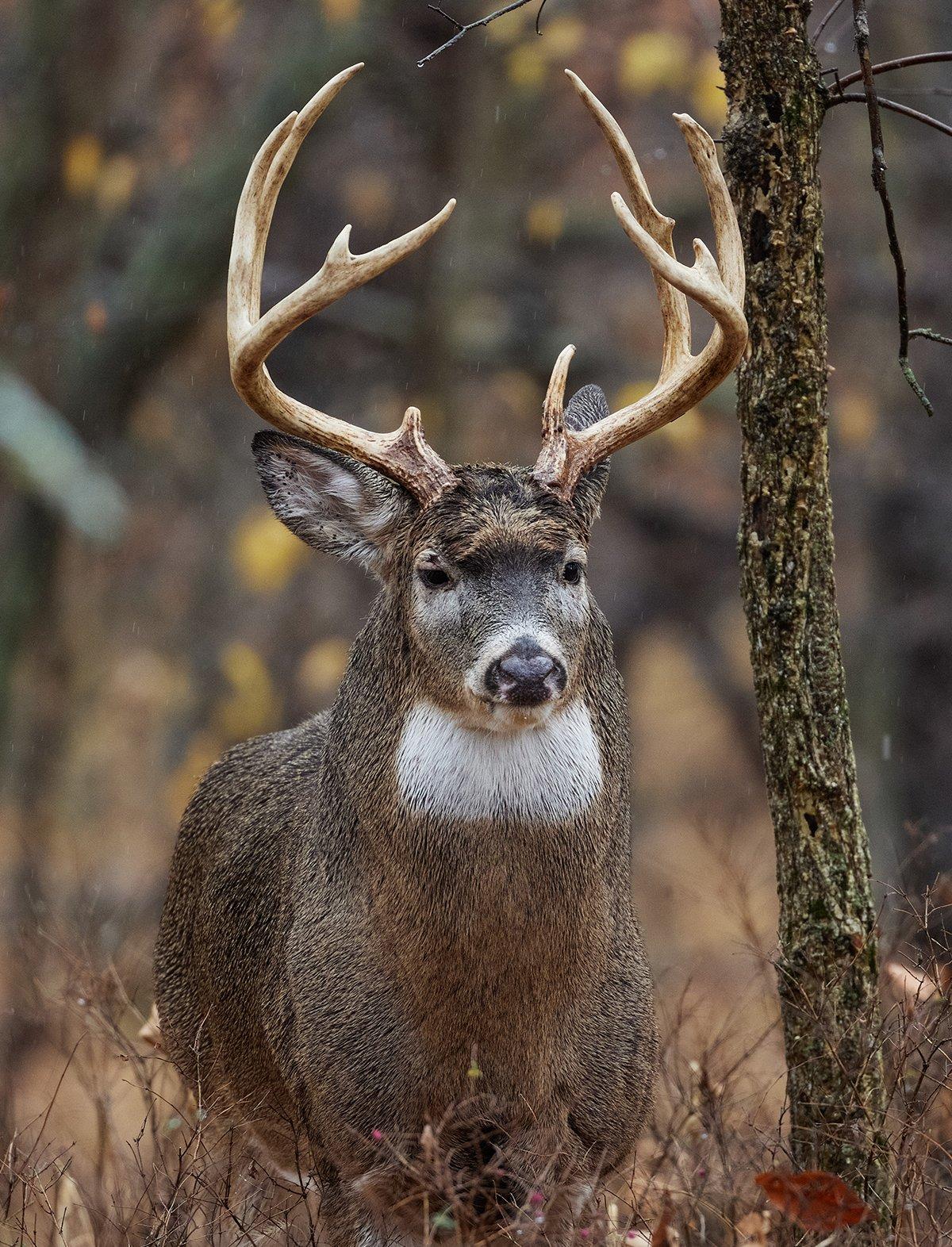The rut's just around the corner, and gun seasons are too. Check out these three prime picks to fill your tag with a bruiser this fall
One morning in Oklahoma, a guide named Jim Bob pointed me to a box blind and whispered, When the sun comes up, you can see and shoot a country mile, Brother. Watch the tree line out front. Good luck.
I climbed into the box and the sun rose a splendid pink and blue. I couldn't see a mile to the tree break, but it might as well have been. My rangefinder read 412 yards to the front edge of the timber.
I refuse to shoot at a deer that far away, not even with a finely tuned rifle and a solid rest, so I was basically an observer the rest of the morning. Might as well make the best of it.
I glassed three hours and confirmed Jim Bob was right about one thing. All the deer movement was confined to the edge of that wood line. I counted 16 animals coming and going, including five bucks, three of them pushing does.
Glassing the deer was good, but the most exciting revelation was the little ditch in the pasture that I ranged to be exactly 271 yards away from my box. Next morning, I slipped into that ditch and anchored my .30-06 on the bank. Twenty minutes after pink sunrise, an old 9-pointer pushed a doe along the tree line, and I drilled him at 141 yards.
I see guides and hunters make the mistake all the time. When rifle season rolls around, people want to set up near a field or on the plains where they can see a buck cruising or chasing a doe from as far away as possible. Cool, but if that distance is too extreme, you can't, or shouldn't, take the shot.
Some of you can kill a deer with a rifle bullet all day long at 300 yards or more, but most of us are better off holding shots to 200 yards, and to me 150 and in is better yet. At that range, with nerves tingling and heart racing, you are at least confident of making a clean kill shot on a buck.
With that in mind, here are three great setups to try this season.
(Don't Miss: Smack Talk: Aggressive Deer Calling Strategies)
1. The Strip Set
This set is dynamite anywhere crop fields, pastures, woodlots, and mid-size forests are interconnected by brushy fencerows, ditches, stream bottoms, and bands of trees. Hmm, that's 80% of the whitetail habitat in North America!
Strips that potentially link deer feeding and bedding zones are easy to see and map out on an aerial land app. Some are narrow, others are wider and thicker. Scout good-looking strips for trails and fresh tracks, rubs and scrapes. Tree lines and hedge rows that concentrate rutting deer are pocked with a mother lode of sign.
Whitetails that move across open ground between two sizeable blocks of trees typically cling to a ditch, fencerow, or similar strand of cover. These strips may have only a few, if any, trees large enough to support a tree stand.
Strip stands are excellent places to ambush bucks any time of season, but I especially like this type of setup late in the pre-rut and into the peak.
Rather than hanging a stand in a so-so tree out in the open or popping up a ground blind along a bare fencerow that is likely to spook deer (another common mistake I see), you're better off hiding a stand or blind in one of the two points of woods/cover where the wind is best, and where you can see and shoot 130 yards or so out to a linear travel corridor.
In farm country, a long and moderately wide strip of woods, say 100 to 150 yards wide, is a favorite travel corridor of deer and a great spot for you to set up. It's narrow enough to neck down the travels of deer, yet large enough to provide an array of tree stand or blind options with good cover and shooting possibilities out to 100 yards or so.
Strip stands are excellent places to ambush bucks any time of season, but I especially like this type of setup late in the pre-rut and into the peak. Big deer often rub and scrape like crazy in the linear covers, then cruise the strips as they prowl to check the estrus stage of various pockets of does. They'll prowl the strips for the last hot gals into the post-rut as well, so go ahead and hunt this set for the rest of gun season.
(Buy Alert: Men's Realtree Excape Camo Early Dawn Sherpa Shell Jacket)
2. The Creek Cover Set
One day in Illinois I set up on a ridge where I could watch down into a long, curling creek below. Around 9 o'clock a tine flashed in a thicket. I raised my binoculars and glassed a giant 9-pointer. The buck was rutting hard, moving slowly but steadily along the water's edge with his nose to the ground. After checking the first thicket, he crossed the creek and bore through the next patch of cover in a bend. He kept it up until he had checked every pocket of brush and weeds in the creek bends. Finding no does, he moved off.
At 10:30 another buck came through with his nose glued to the ground, doing the same thing, checking all the cover pockets. Twice he stopped to rub trees and rip scrapes. In the third cover he jumped a doe. She took off and he galloped away on her heels.
I had to get in on the action, so that afternoon I moved my stand down on the creek and set up downwind of one of those bend thickets. The next morning the big 9-pointer cruised back through, and I shot him at 45 yards with my .270.
To this day I love the creek-cover set, especially during peak rut. You likely know of a creek or stream on your hunting property, or can locate one on an aerial app. The best bottom to hunt will have a creek that winds like a snake, with pockets of thick brush in the curves. Hang a stand in a bend thicket, downwind of a trail or, better, a water crossing pocked with fresh tracks. A buck checking for does won't plunk into deep water and swim across, but he'll darn sure walk across a shallow gravel or sand bar as he scours the covers.
Make sure your scent blows out into open timber, not up or down the creek. A cruiser buck might come trolling for does from either direction, so keep your eyes peeled. Set out a wick of doe scent. If you sit awhile one morning, try some grunts or doe bleats and maybe a volley or two of rattling.
(Don't Miss: Ghost Busters: What to Do When Your Buck Disappears)
3. The Buck Hole
You probably had plenty of elbow room in the woods in bow season, but not now. Gun season means more hunters and increased pressure, especially on public land. Deal with it and use it to your advantage.
Check Google Earth or an aerial of your hunt area. On a paper map and with a red Sharpie, mark X spots where other hunters camp, park their trucks, and drive 4-wheelers into the woods.
Noted whitetail biologist Grant Woods has monitored hunter behavior on dozens of properties he has managed over the years. His data show that gun hunters typically spend 90% of their time in hot zones within several hundred acres of fields and near roads. The timber and thickets deeper into the land receive only 10% of hunter time, and some spots aren't hunted at all.
Once we're done with a season-end analysis of a property, we're never surprised to find that most of the oldest, biggest bucks are harvested in those remote, lightly hunted spots, says Woods.
Check your maps for secluded, thick buck holes a half-mile or farther away from the red pressure points on your map. It might be a rough, rocky draw with thick cedars … or a half-acre beaver swamp with waist-high grass … you get the picture. Pack a stand on your back, sneak back into a hole and set a tree stand on a trail or funnel that leads in the direction of the nearest major food source. If you can set up in or near dense honeysuckle or other greenery where deer will browse all day, better yet.
Hunt this set morning or afternoon. It takes extra time, work, and smarts to find and hunt the buck holes, but that is often how you punch your tag in the rifle rut.
(Don't Miss: Why Deer Hunting on Halloween is Scary Good)












